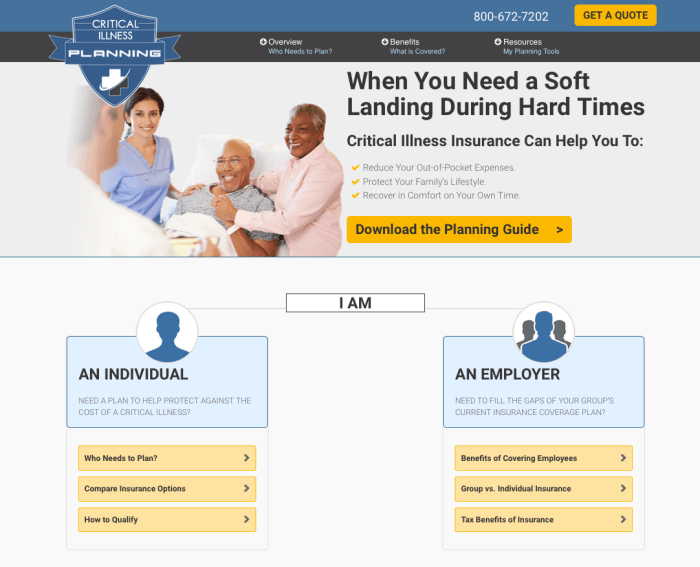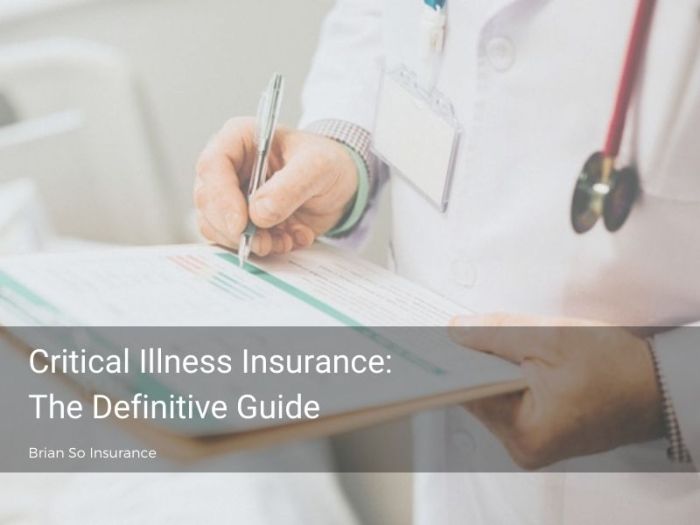Navigating the world of critical illness insurance can be challenging, especially when you have pre-existing conditions. Securing adequate coverage becomes even more crucial as healthcare costs continue to rise. This comprehensive guide will equip you with the knowledge to make informed decisions about critical illness insurance, even with pre-existing health concerns in 2025 and beyond.
Understanding Critical Illness Insurance and Pre-Existing Conditions
Critical illness insurance provides a lump-sum payout upon diagnosis of a specified critical illness, such as cancer, heart attack, stroke, or kidney failure. This financial safety net helps cover medical expenses, lost income, and other associated costs. However, pre-existing conditions – health issues you had before applying for insurance – often complicate the process. Insurers assess the risk associated with pre-existing conditions, which may lead to higher premiums, exclusions, or even outright denial of coverage.
Defining “Pre-Existing Condition”
A pre-existing condition is any illness, injury, or health issue you’ve received treatment for, or have been diagnosed with, within a specific timeframe before applying for insurance. This timeframe varies among insurers, typically ranging from 6 months to 2 years. Even if you are currently symptom-free, a past diagnosis can be considered a pre-existing condition.

Source: prweb.com
Finding Critical Illness Insurance with Pre-Existing Conditions: A Step-by-Step Guide
Securing critical illness insurance with pre-existing conditions requires a strategic approach. Here’s a detailed plan to help you navigate the process effectively:
1. Assess Your Health and Medical History
Begin by thoroughly reviewing your medical records. Identify all diagnosed conditions, treatments received, and medications taken. This comprehensive understanding is crucial for transparent communication with insurers.
2. Research Insurers Specializing in Pre-Existing Conditions
Not all insurers are created equal. Some specialize in offering coverage to individuals with pre-existing conditions. Research insurers known for their flexibility and willingness to accommodate specific health challenges. Online comparison tools can be beneficial in this stage, but always verify information directly with the insurer.
3. Compare Policy Features and Exclusions Carefully
Once you’ve identified potential insurers, meticulously compare their policies. Pay close attention to:
- Waiting periods: The time after policy inception before coverage for specific conditions begins.
- Exclusions: Specific conditions or treatments explicitly excluded from coverage.
- Premium costs: Expect higher premiums compared to individuals without pre-existing conditions.
- Benefit amounts: The lump-sum payout offered for various critical illnesses.
- Policy renewal terms: Understand the insurer’s policy on renewing coverage.
4. Be Transparent and Accurate in Your Application
Honesty is paramount. Providing inaccurate or incomplete information can lead to policy denial or even legal consequences. Disclose all relevant medical information truthfully and completely.
5. Understand the Underwriting Process
Insurers will undertake an underwriting process to assess your risk. This may involve reviewing your medical records, conducting medical examinations, or requesting additional information. Be prepared for this process and cooperate fully.
6. Review the Policy Document Thoroughly
Before signing any policy, carefully review the entire document. Ensure you fully understand the terms, conditions, exclusions, and benefits. If anything is unclear, seek clarification from the insurer before committing.
Tips for Increasing Your Chances of Approval
While securing coverage with pre-existing conditions may be more challenging, these strategies can improve your chances:
- Maintain a healthy lifestyle: Demonstrating commitment to your health through lifestyle choices can positively influence the insurer’s assessment.
- Seek updated medical evaluations: Recent medical reports showing improvement in your health can strengthen your application.
- Consider a higher premium: A willingness to pay a higher premium might make you a more attractive candidate.
- Start early: Applying for insurance earlier, before your condition worsens, increases your chances of approval.
- Consult a financial advisor or insurance broker: Professionals can provide guidance and support throughout the process.
Types of Critical Illness Insurance and Their Suitability for Pre-Existing Conditions
Several types of critical illness insurance exist, each with varying levels of suitability for individuals with pre-existing conditions:
- Guaranteed Acceptance Policies: These policies offer coverage regardless of your health status but typically come with higher premiums and limited benefits.
- Modified Acceptance Policies: These policies offer a balance between affordability and coverage, accommodating some pre-existing conditions with specific exclusions or limitations.
- Standard Policies: These are typically more challenging to obtain with pre-existing conditions due to stricter underwriting.
Frequently Asked Questions (FAQs)
- Q: Can I get critical illness insurance if I have a pre-existing condition?
A: Yes, but it might be more challenging and potentially more expensive. Some insurers specialize in covering individuals with pre-existing conditions. - Q: How long do I have to wait after a diagnosis before applying for insurance?
A: This waiting period varies by insurer, usually ranging from 6 months to 2 years. Check with individual insurers for their specific requirements. - Q: What information do insurers need about my pre-existing condition?
A: They’ll need complete medical history, including diagnoses, treatments, and medications. Be transparent and accurate. - Q: Will my pre-existing condition always be excluded?
A: Not necessarily. Some insurers might cover the condition after a waiting period or with certain limitations. - Q: How can I find an insurer that caters to my needs?
A: Use online comparison tools, consult an insurance broker, and directly contact insurers to inquire about their policies regarding pre-existing conditions.
Conclusion
Choosing critical illness insurance with pre-existing conditions requires thorough research, careful planning, and transparent communication with insurers. By following the steps Artikeld in this guide and understanding your options, you can significantly improve your chances of securing the financial protection you need. Remember to always seek professional advice from a financial advisor or insurance broker to personalize your strategy.
Call to Action
Ready to secure your financial future? Contact us today for a free consultation and let us help you find the right critical illness insurance policy for your specific needs and circumstances.
FAQ Overview
What is considered a pre-existing condition?

Source: briansoinsurance.com
A pre-existing condition is any medical condition, illness, or injury you had before applying for insurance. This includes conditions you’re currently being treated for, as well as those you’ve been treated for in the past.
How long are typical waiting periods for pre-existing conditions?
Waiting periods vary by insurer and condition, typically ranging from several months to a year or more. The policy will specify the waiting period before coverage begins for specific pre-existing conditions.
Can I be denied coverage for a pre-existing condition?
While insurers can’t deny coverage entirely based on pre-existing conditions under many regulations, they may exclude specific conditions from coverage or impose longer waiting periods. The specifics depend on the insurer and the relevant regulations in your jurisdiction.
How do I compare different critical illness insurance policies?
Compare policies based on coverage amounts, exclusions, waiting periods, premium costs, and the insurer’s reputation and financial stability. Use online comparison tools or consult an independent insurance advisor.
